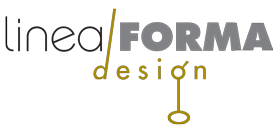In the pre-internet era, the only medium for graphic design was print, so type just sat on the page. To make letters stand out from the others on the page, you could change font families, size, color and kerning. Within a font family, bold, italic, condensed and extended versions increased their visual range and added some more variety. Early desktop publishing in the late 1980s didn’t really expand those options until the first plug-ins and filters allowed dropped shadows, bevels and embossing to be added to letters in the 1990s, and suddenly, every printed page had at least one of those filters applied to headlines and text. As these things go, they were vastly overdone; learning moderation was mandatory. I’m sure I’m not alone remembering those times.
But the internet has taken over. Even magazines we all grew up with are phasing out their print versions, so web versions dominate. A part of me still misses “press checks” for a new print job, the smell of the ink, and the lithography presses cranking out pages. Somewhat ironically, the biggest presses, used for daily newspapers and magazines, are called web presses … an interesting foreshadowing of the process that will ultimately replace them. Now, the internet is our life. As a designer, it certainly has dramatically changed my life. Transition was painful at times, but hey, that was then, this is now. And it’s the time for motion graphics!
Type on the web allows for so many more effects when you add the element of motion. It can be fun and playful. It can be whatever we want it to be. Or, it wants to be. It sometimes takes on a life of its own. And during that life, characters can enter the scene, then they can morph or transpose into something else, and they can exit the scene, like any other “characters” performing in the scene. They are more actors in web usage than in print, but they do have unique personalities in both formats. I’m always amazed at the range of visual interpretations a letter can have and still be recognized and understood.
.
Please note though, my examples today relate more to logos, headline type, and short phrases. Large amounts of body copy that are meant to be read and absorbed quickly don’t really work as well with these examples. But they can still animate in or out by word or line at a readable pace. For my examples, the fun factor is the message. In fact, you will notice many of them have a “jiggle” glitch quality added to the whole scene, for that bouncy look seen in some contemporary web ads. It’s the perfect partner for the “reveals” and “dissolves” and other popular motion graphics tricks I’ve been using the past few years, and I have written about in my last few blog posts. This is entertaining to produce, and ramps up the audience focus. So…enjoy the possibilities!
Share this:


10 Responses
Zoe
Mad friggin’ talents my friend!! Very fun!
bgob1
Thanks, Zoe. Glad you enjoyed it.
Mark Johnson
Fun and playful as always !
Elisa
I’m clearly personally stuck in the pre-internet era trying to figure out how to use font families when needed…. ;o)))
But this is way cooler!!
Chuck
You hit one out of the park with that one mister magic.
bgob1
Thanks, Chuck.
Tom Barber
Billy…..Bileeeee…..Bil Leeeeeee.
Tee Bee
bgob1
TB, you always know just what to say. Great use of letters.
Gayle
Funnnn!!!!!
bgob1
I love my type.